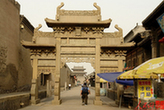Classification
The textures of ancient Tibetan seals were as follows: gold, silver, jade, cloisonné, rutile, crystal, copper (red copper, brass, white copper and bronze), iron (pig iron, wrought iron and ferroalloy), wood, padauk, sandalwood, red sandal wood, blackwood, box wood and poplar, horny substance (rhinoceros horn, deer horn, ram horn, ivory, ox horn and beast bones) and Dzi bead (Tuo Jia).
Various kinds of scripts were engraved on the seals, including ancient Tibetan, Xang Xung, Tangut, Tibetan, Pagba, Mongol, Chinese, Sanskrit, Nepali, Hui, Manchu and English scripts.
The patterns engraved on the seals were as follows: Ba Rui Xiang (astamangala), Qi Zheng Bao (cakravartin’s seven treasures), Xian Lin Fa Lun (Dharmacakra and a pair of unicorns), Liu Zhong Chang Shou (six kinds of longevity), Wu Miao Yu (five subtle desires), He Qi Si Rui (four harmonious friends), Ru Yi Tou (scepter border’s end), Tian Guan (celestial crown), Tu Ao Fo Xing (convex-concave Buddha’s star), Tai Ji Tu (Diagram of the Supreme Ultimate), Jin Gang (vajra), Pen Yan Mo Ni (flame and treasure symbolizing good luck), Jin Gang Qiao (metallic bridge), 卐-shaped pattern, the Chinese character Shou (which means longevity), the Great Wall, fret, the sun and the moon, Lucky Cloud, Shou Mian Guai Zi Wen (winding beast-head pattern), Hua Cao Guai Zi Wen (winding flower-and-plant pattern), Hua Gai Wen (canopy pattern) and Chuang Wen (pattern of a Buddhist pillar)
The shapes of seal handles are as follows: Bao Zhu, Ru Yi, Tong Ren Guan (peaked hat worn by Lama), Ru Yi Bao Guan, cube, cylinder, tile, elliptic cylinder, lion, frog, tower, bird, bridge, lotus, interlocking lotus, Macaca cyclopis, ox, horse, horse head, tiger and pillar.
Ivory seal, with Liu Chang Shou Tu (a picture of six kinds of longevity, which is composed of stone, river, cypress, Lao Shou Xing (the god of longevity), crane and deer) engraved on its handle, during the Galdan Phobrang Authority in Tibet, Qing Dynasty |
Ancient Tibetan seals have been preserved due to their artistic and historical value. Only when its materials, handle and carvings combine perfectly will a seal be worth collecting. As tokens, both official and personal seals were made during a certain historical period, thus having the characteristics of historical significance. Through the study of Tibetan seals through the ages, we can learn more about Tibet in terms of its history, culture, law system and its political, economical and social development process.
By Yang Guozhen
Editor: Liu Fang





Why not rent a boyfriend, or girlfriend to please parents during the Spring Festival?